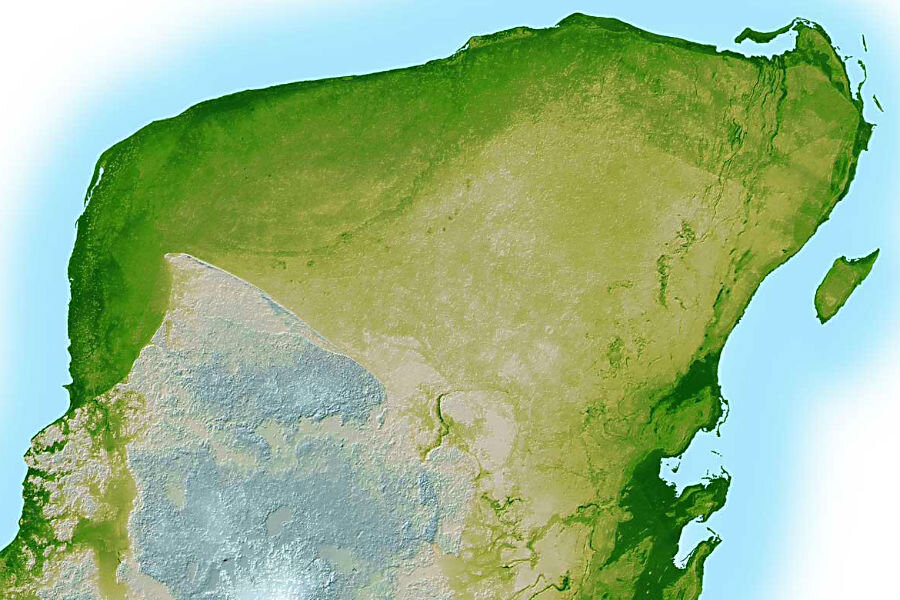What's in the crater left by the asteroid that killed the dinosaurs?
Loading...
Scientists are aiming to drill into the crater left by the asteroid that may have killed off the dinosaurs in an effort to learn more about the mass extinction, and the revival of life in the aftermath of the cosmic collision.
Researchers from the International Ocean Discovery Program (IODP) will travel to the small Mexican town of Chicxulub in the state of Yucatán this spring to analyze the Chicxulub impact crater left by a massive bolide, or impactor, around 66 million years ago.
Scientists have not yet confirmed that the Chicxulub bolide was responsible for the mass extinction seen at the end of the Cretaceous period leading into the Paleogene era, but the hypothesis that the 6-mile wide impactor brought about the extinctions associated with that time is widely accepted, if still controversial. The crater the IODP scientists hope to learn more about is centered off of Mexico’s coast near Chicxulub and is more than 100 miles wide and 12 miles deep, making it the third-largest such structure on Earth.
What separates the Chicxulub crater from other similar ones around the world and what makes scientists hopeful for the program’s results are its distinctive peak rings – rocky ridges left in the wake of the bolide impact that still remain today.
“Chicxulub is the only preserved structure with an intact peak ring that we can get to. All the other ones are either on another planet, or they’ve been eroded,” said Sean Gulick, a geology research professor at The University of Texas at Austin and co-chief scientist on the $10 million IODP endeavor, to Science. Analyzing the peak rings, which are common features on other planets and the Moon but eroded on Earth except for Chicxulub, could provide new geological and environmental insight about life after the bolide impact.
“You can assume that at ground zero of this impact we are dealing with a sterile ocean, and over time life renewed itself. We might learn something for the future,” Gulick told CNN. “Certain events can have lasting effects on our planets morphology, stratigraphic layers, and, of course, life.”
A specialized IODP boat outfitted with three large pylons will sail from the Yucatán coast this April to an offshore location above a peak ring. There, the pylons will be lowered into the rock and the boat will lift up and out of the water to form a stable drilling platform from which the IODP team will send a diamond-tipped bit nearly 1 mile deep into the peak ring to drill and extract rock over the course of the two-month expedition. Those samples will aid in research to learn more about peak ring structure and the genetic history of the microbes that may live there.
While no asteroids or other objects on the scale of the Chicxulub impactor are expected to collide with Earth for the foreseeable future, discovering more about what happened millions of years ago would provide a foundation for understanding environmental mechanisms that have only been theorized to this point.
“We pretty much knew what would happen if another asteroid of this size hit us today – it would not be good – but our work contributes to a larger body of work dedicated to understanding the many geologic and ecologic processes that happen when such large-magnitude events occur,” geologist Jason Sanford told CNN.








